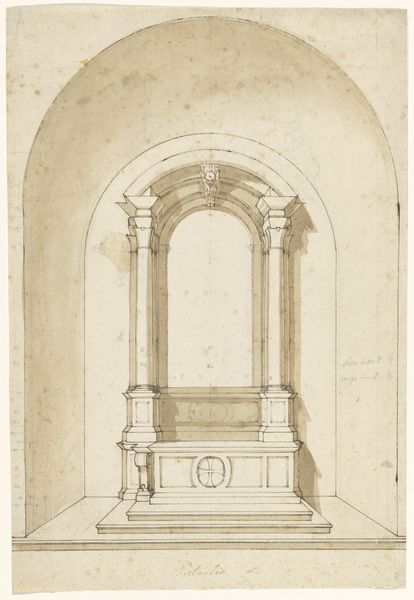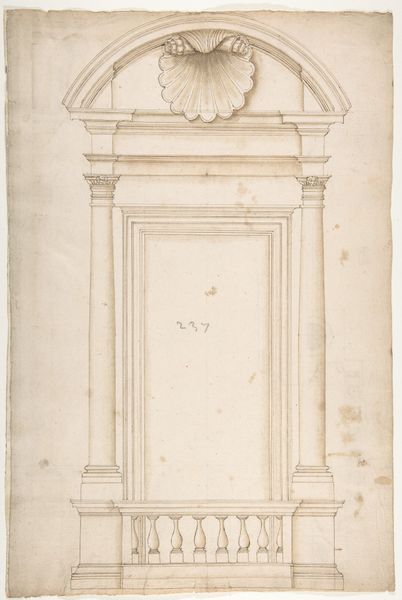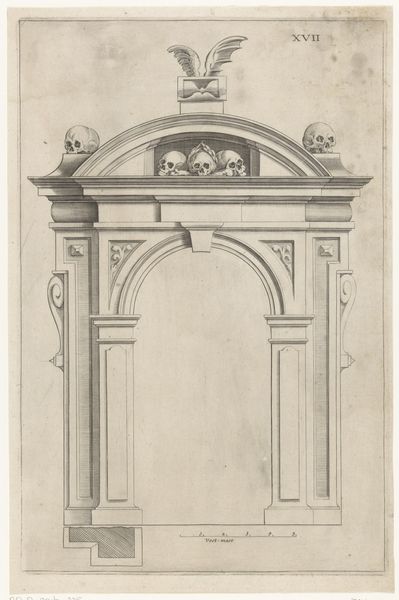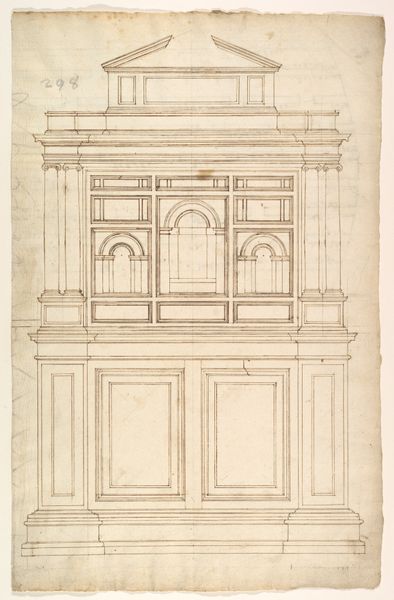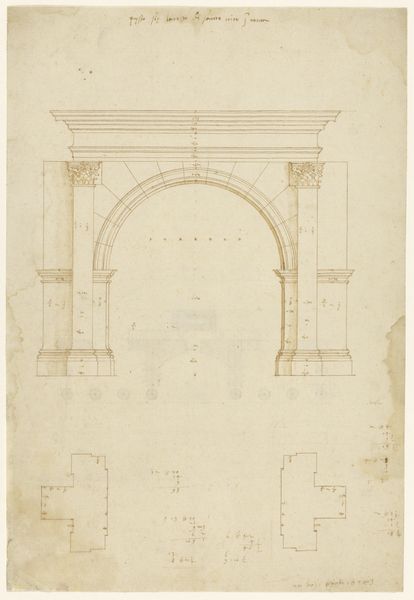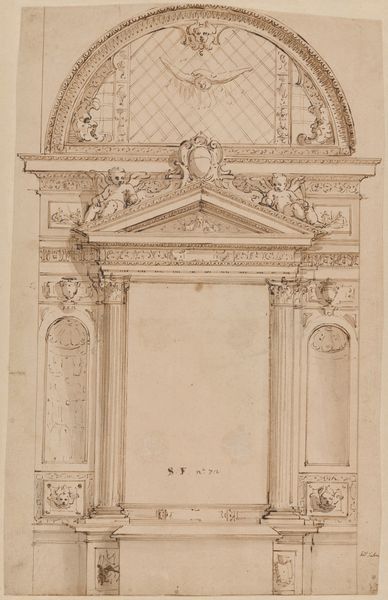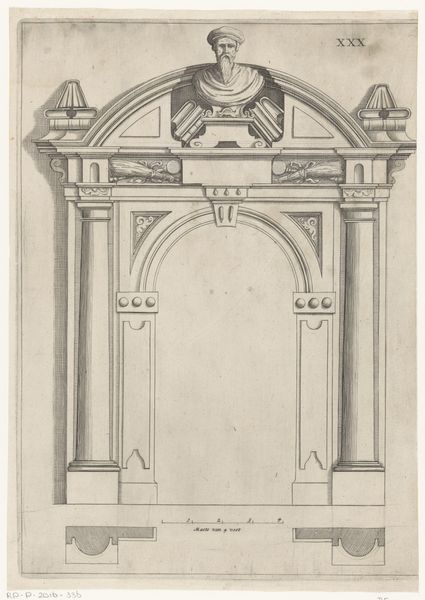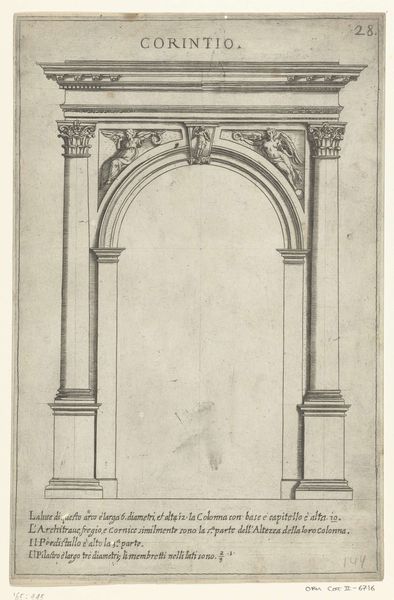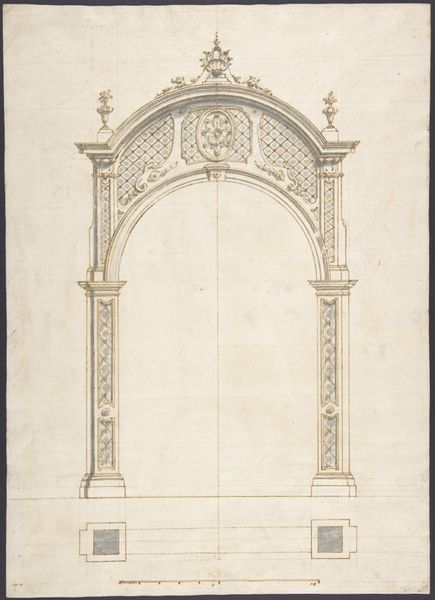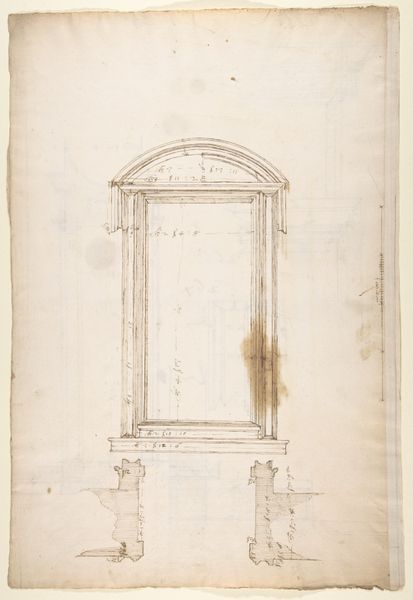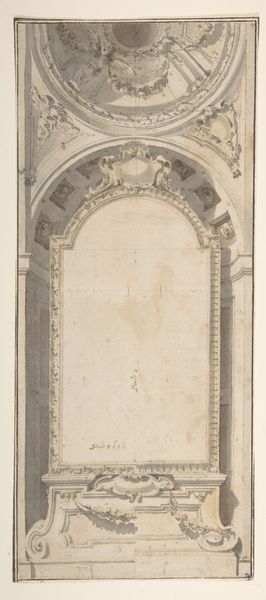
drawing, paper, ink, architecture
#
drawing
#
allegory
#
paper
#
form
#
11_renaissance
#
ink
#
classicism
#
line
#
italian-renaissance
#
architecture
Dimensions: height 357 mm, width 234 mm
Copyright: Rijks Museum: Open Domain
Editor: Here we have Andrea Palladio's "Design for an Altar," created sometime between 1518 and 1599, using ink on paper. It has a quiet, classical feel... all balanced symmetry and smooth lines. What strikes you most when you look at this piece? Curator: I’m immediately drawn to the performative aspect of religious space inherent in the drawing. Altars are, of course, focal points for ritual, and the theatrical, almost staged presentation here begs questions about the politics of faith during the Renaissance. Consider the role of the church then—not just a spiritual center, but a significant political and economic power. How does this altar design reinforce or perhaps challenge those power dynamics? Editor: That's a really interesting point. I was mostly focused on the sort of purity of the lines, the clean classical style... the figures on top almost seemed incidental. But, you're right, the performative aspect can't be ignored. The figures are literally elevated. Curator: Exactly! And what does it mean to elevate certain figures – and implicitly, certain ideals – within this space? Are we looking at a glorification of religious authority, or is there a more nuanced commentary on the construction of belief systems? Thinking about the Reformation, happening roughly at the same time, the role of imagery in worship was a huge point of contention, wasn’t it? Editor: It was! So Palladio's design, regardless of his intention, enters a really complex and charged conversation about faith and power. I hadn’t thought of it that way at all. Curator: Precisely. And understanding that historical context allows us to see this "Design for an Altar" as more than just a beautiful drawing. It becomes a reflection of the complex negotiations between art, religion, and power in Renaissance society. Editor: Thanks, that definitely gave me a new perspective. I'll never look at a Renaissance altar the same way again!
Comments
No comments
Be the first to comment and join the conversation on the ultimate creative platform.
